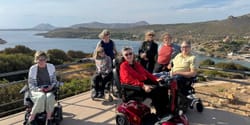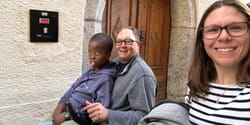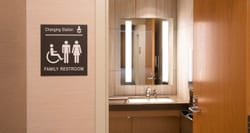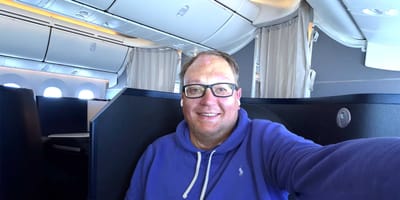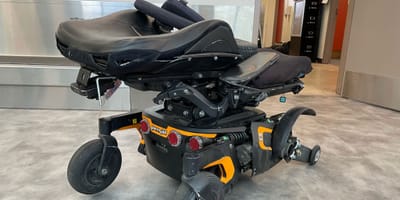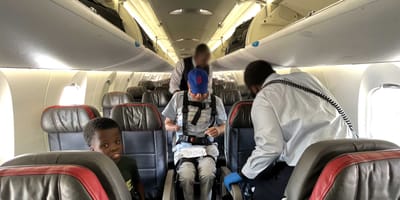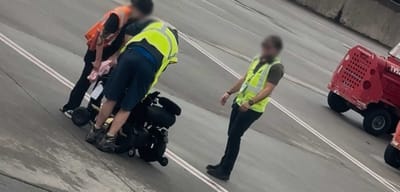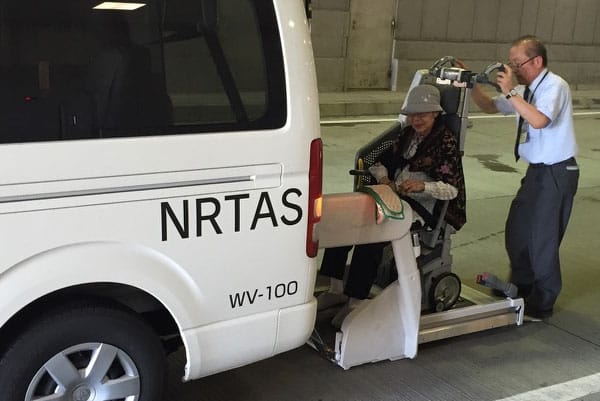
Last week, I had the opportunity to escort my parents, who are in their late 80’s, from their retirement home in Fukuyama, Japan to their new assisted living home in the
Seattle, Washingtonarea. My dad has trouble walking more than a hundred yards, and my mom uses either a walker or wheelchair full time.
This being my first experience with wheelchair travel, I was probably overly cautious about making sure the special service request (SSR) was notated in the reservation. My travel agent requested a wheelchair for both of my parents. More specifically, we requested the WCHC SSR, which tells the airline that assistance is needed all the way to the aircraft seat. I personally followed up with the airline (All Nippon Airways, ANA) and was told that the SSR code was properly entered into the reservation.
They also offer these SSR codes: WCHS, for passengers who can walk, but not climb stairs; and WCHR, for passengers who can navigate a few steps, but cannot walk long distances. ANA has quite an
extensive websitethat speaks to travelers with special needs.
For a list of all major airlines and the contact/website information for their disability service centers,
CLICK HERE.
Our reservations were made about two weeks prior to travel, and since I was traveling round trip from Seattle, I confirmed again that their reservations were coded correctly on my departure from the United States. Because of the length of flights and their condition/age, I booked them in business class for this trip.
Our routing was Hiroshima Airport (HIJ) to Tokyo-Narita (NRT) to Seattle. HIJ is a small regional airport, although it does serve international flights departing to other Asian countries. One of the challenges of travel connecting through Tokyo is that most domestic flights fly through Tokyo’s Haneda Airport, and international flights through Narita. Many itineraries mix airports, but that requires a long bus or taxi ride across town. I was able to book a flight directly between HIJ and NRT to avoid this, but it was on a small CRJ-700 regional jet.
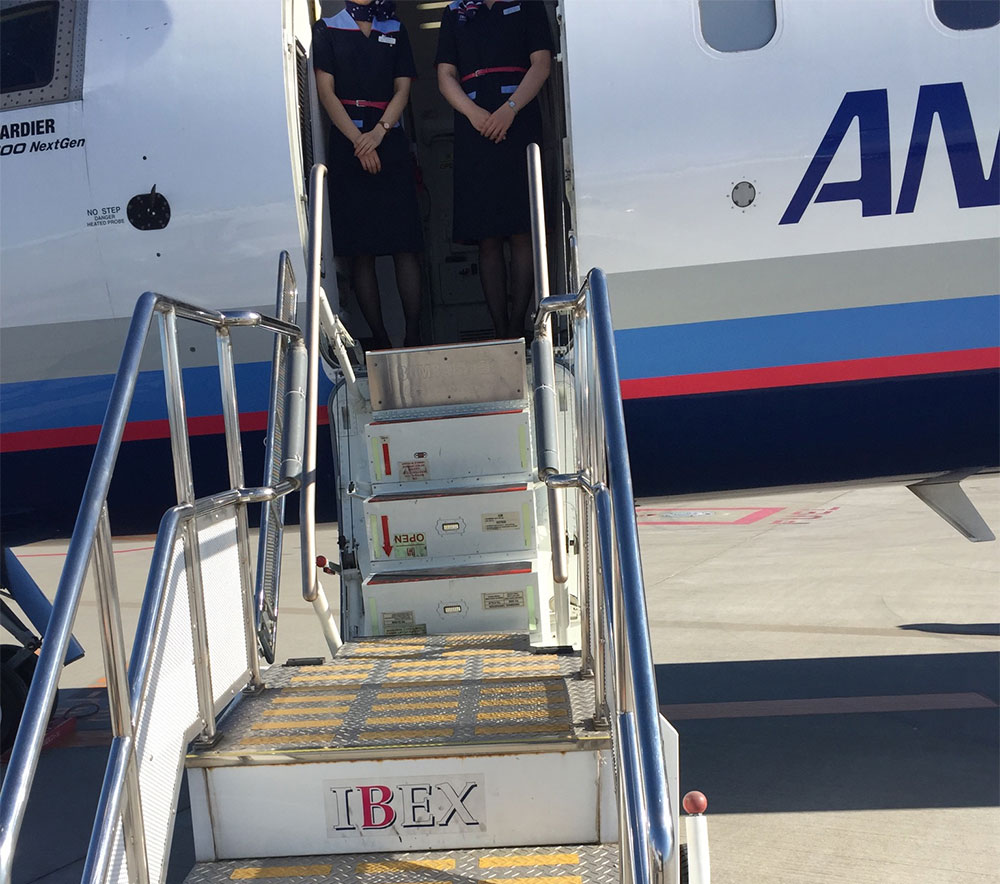
August 5, NH 3114 CRJ-700, IBEX Airlines codeshare, HIJ-NRT. HIJ is a nice, newer, airport which serves both regional and international destinations. It is also served by a good regional bus system that can get you to Hiroshima’s city center or other adjacent cities. Most service people only speak Japanese, but signs are in English as well. There are nice restaurants on the third floor of the airport. We parked the van, unloaded mom’s wheelchair, and were met at the check in counter, where we checked in luggage including her wheelchair (which arrived in Seattle in good shape in the oversize luggage location). She was issued an ANA wheelchair, and we were asked to return to the ticket counter 45 minutes prior to the flight. When we returned, they had a wheelchair for my dad and two escorts, who took them through security and then directly to the ramp (tarmac) via elevator. I met them at the plane. I believe they would have made arrangements if necessary, but after discussion we agreed that they could go up 7 air stairs to the aircraft. The IBEX CRJ-700 is a single class aircraft. Although we were ticketed in row 17, ANA moved us up to row 1, seats A, B and C. The aircraft departed on time from Hiroshima.
We arrived on time at the Tokyo-Narita terminal 1 ramp and had a 90 minute connection. I was apprehensive about this short connection, given the long transit through terminal 1 and having to go through immigration. Able-bodied passengers deplaned first and boarded a shuttle to the terminal. Two special vans, staffed with four people in total, then pulled up to the plane and unloaded special wheelchairs that “walked” up the air stairs and onto the aircraft. My parents were then wheeled down the stairs, and lifted into the vans via mechanical lifts. The vans took us straight to a special terminal 1 entrance and an immigration line reserved for crew and the disabled. The whole process, plane to connecting gate, took only 30 minutes. I was impressed. ANA staff stayed with us until we boarded. I asked ANA staff about the special equipment that had been used, and they said that it’s all very new (used three times) and only at NRT.
Both HIJ and NRT had great disabled/family restroom facilities that allowed me to accommodate mom and dad at both airports.
August 5, NH 178, 777-300, NRT-SEA. After boarding, the cabin crew introduced themselves to mom and dad. Since mom can get by with a walker, a flight attendant or I provided assistance throughout the flight to get to the restroom. The lavatories are similar in size to others I’ve used. I don’t know if they had a special lavatory to accommodate an onboard wheelchair (Editor’s note: They do). The flight attendants were very attentive and happy to provide special assistance. Some of this service level may be because of being in business class.
We arrived early into Seattle and were met with airport contractor attendants and aisle chairs/wheelchairs inside the plane. International flights arrive to a remote satellite terminal at SEA. The two young wheelchair assistance staff people did a great job navigating us through the airport, immigration and customs. There were no family/private restrooms until after immigration and customs. I had to depend on a female wheelchair escort to take my mom into the restroom at the baggage claim before customs. Afterwards, they helped us collect our luggage and take the airport train from the satellite to the main terminal. Once we arrived to the main terminal, we had mom’s wheelchair and were able to use it to the parking garage. This ended our 15 hour trip.
In my opinion, ANA operates at a very high service level for disabled passengers. They depend on local contractors for wheelchair support in Seattle. Although they did a great job, it’s not the same as what we experienced at HIJ and NRT. I would recommend ANA for future travel needs within or to Japan.
Have you used wheelchair assistance on All Nippon Airways or another Asian carrier? If so, how was your experience? Share with us your travel story at
contribute@wheelchairtravel.org!



